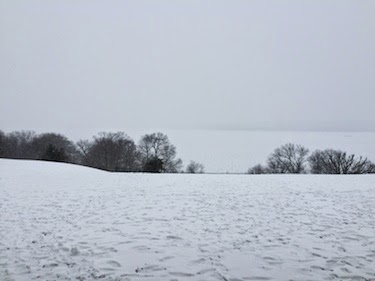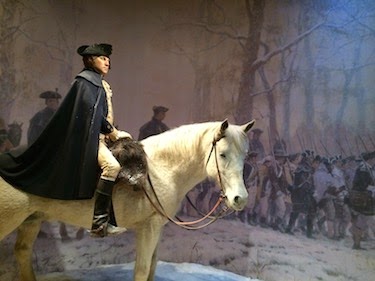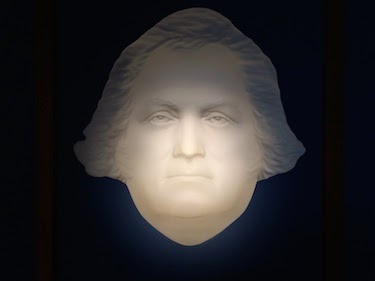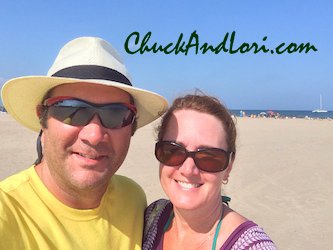It was easy to see why George Washington loved this spot of land that gently slopes down toward the Potomac River. This is wholly despite that the Potomac was frozen over and that the gently sloping back lawn (for that matter, all lawns and lands visible in any direction) was covered with a thick blanket of snow the day we visited. More of the white stuff was falling steadily, and it had a hushing effect on this, the beloved home of our most well known of founding fathers.
For us, Mount Vernon has been an “oh, yeah” destination when visiting Washington, DC. But after I burned through a “founding fathers bio and revolutionary war” reading binge a few years ago, Washington’s home became a must-see for our next trip to the capital. There would have been more to see had we come in the spring or summer (Washington’s tomb and the path down to the river were closed because of icy walks), but we practically had this wonderfully presented and managed site to ourselves. And that blanket of white was, simply put, beautiful, and offered an ominous prelude to one of our upcoming stops, Valley Forge.
The spot on which the house was built had been in Washington’s family for three generations prior. Yes, George Washington’s great grandfather owned this land in the mid 1600’s: George was a very well-established Virginian. In 1758, George began to replace the family farmhouse that stood on the spot, and he continued to expand and tinker with the house and the surrounding plantation he and Martha managed from the house. To be precise, he managed his plantation from everywhere he went, battling the British one hour, dashing off letters to Martha and his servants with management instructions the next.
 |
| A Frozen Potomac River from Mount Vernon’s Back Porch |
A tour of Mount Vernon begins in the nearby impressive and modern museum. After an introductory film hosted by Pat Sajak (not as cheesy as you’d think) and a dramatic history film, you walk to Mount Vernon from the side of the front lawn. Head to the right so you can approach the house from the full length of the front lawn. You enter the house from the left, where you’re greeted by a volunteer who tells you about the room you’re in, answers your questions, and guides you on to the next room. You’ll see the stately, yet somehow understated, parlor rooms where George and Martha greeted and entertained guests and dignitaries. You’ll see the dining room, the bedrooms, and Washington’s studies. Walking around the plantation buildings, you’ll find the smokehouse, the stables, the blacksmith’s shop, and the slave’s quarters.
For any of our friends or followers who might ask us about the sights of Washington, DC, we’ll now recommend Mount Vernon as a must-see. Set aside a full day of your visit to the capital to venture out to Mount Vernon. And while you visit, be sure to thank the Mount Vernon Ladies’ Association: this is the ladies’ philanthropic organization that saved Mount Vernon and still benevolently manages it to this day.
If you’re interested in a great biography of George Washington, try “His Excellency George Washington”, by Joseph J Ellis. For a fantastic account of the birth of our nation, wonderfully written in novel form, check out “Rise To Rebellion” and “The Glorious Cause” by Jeff Shaara.
 |
| George Washington and “Nelson” |
 |
| An Inverted Carving of George Washington |






